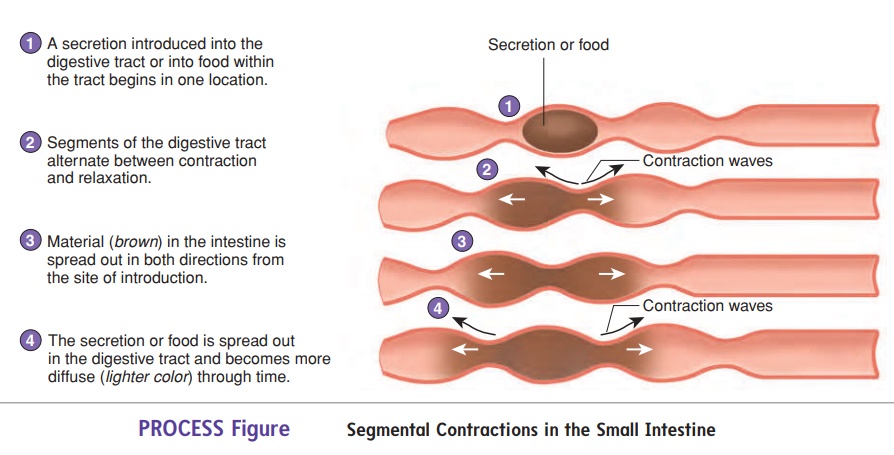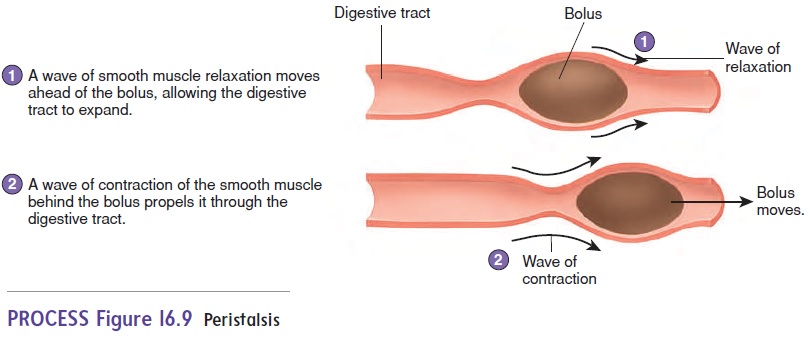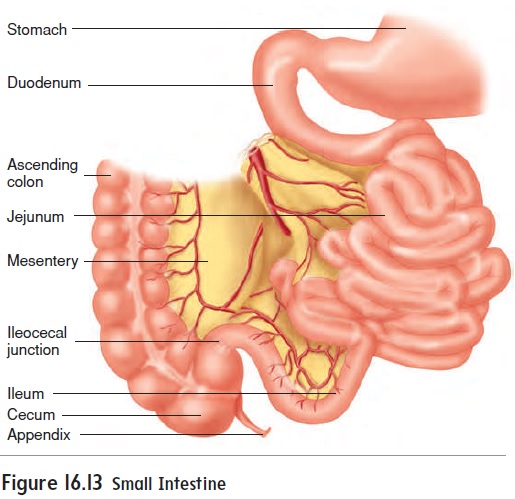Chapter: Essentials of Anatomy and Physiology: Digestive System
Movement and Absorption in the Small Intestine

Movement In The Small Intestine
Mixing and propulsion of chyme are the primary mechanical events that occur in the small intestine. Peristaltic contractions proceed along the length of the intestine for variable distances and cause the chyme to move along the small intestine (see fig-ure 16.9). Segmental contractions are propagated for only short distances and mix intestinal contents (figure 16.15).

The ileocecal sphincter at the juncture of the ileum and the large intestine remains mildly contracted most of the time, but peristaltic contractions reaching the ileocecal sphincter from the small intestine cause the sphincter to relax and allow chyme to move from the small intestine into the cecum. The ileocecal valve prevents movement from the large intestine back into the ileum.

Absorption in the Small intestine
A major function of the small intestine is the absorption of nutrients. Most absorption occurs in the duodenum and jejunum, although some absorption also occurs in the ileum (see “Digestion, Absorption, and Transport” later).

Related Topics